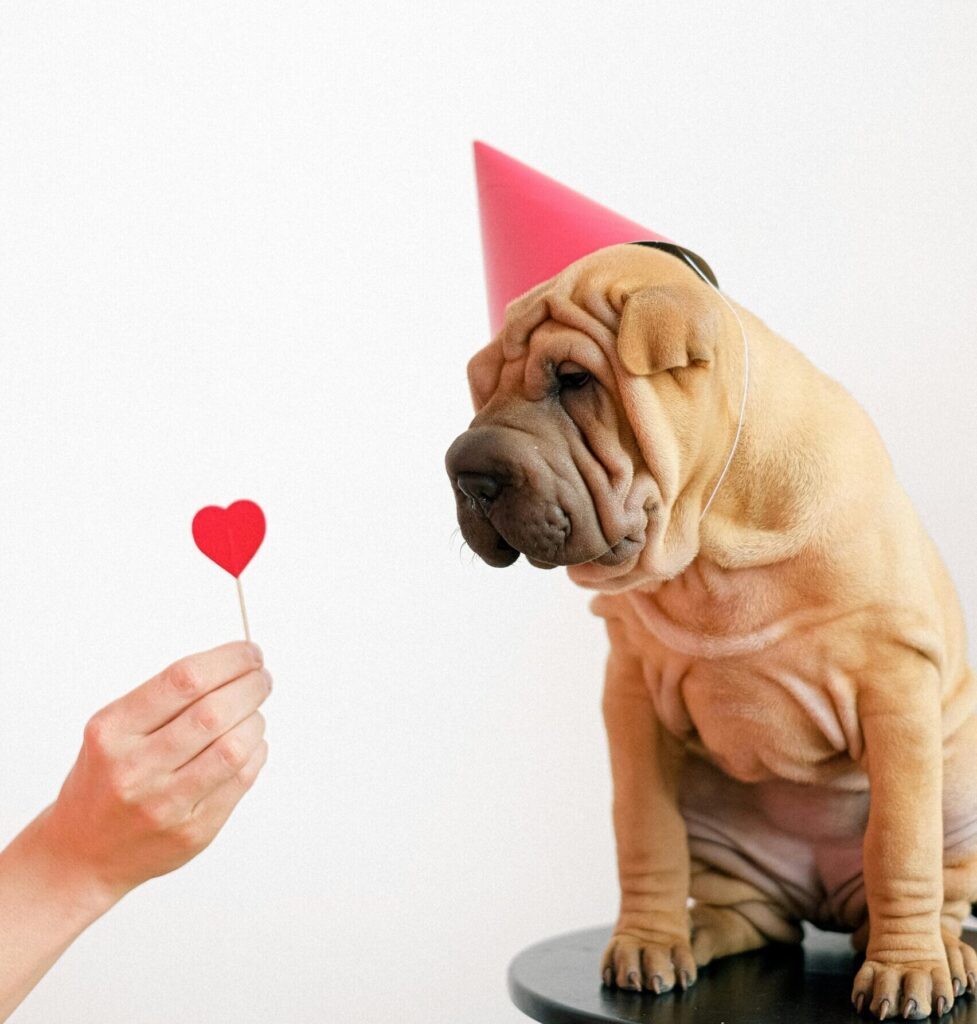Summery :
- Dogs learn throughout their lives
- Training an adult dog: the advantages
- What problems can arise when training a dog?
- How to Deal with Serious Behavioral Problems
- What does basic dog training consist of?
- The right training for the adult dog
- An Overview of the 7 Basic Exercises for Training a Dog
- Stay still, every time your dog pulls
- At first, propose a trade!
- Practicing “Stay!” from “Sit!” or “Down!”
- Is it worth attending dog school?
1- Dogs learn throughout their lives
The good news is that dogs learn throughout their lives. Much like us humans, our four-legged friends never stop learning. Even into old age, dogs are willing to assimilate commands, rules and certain behaviors, just as they are able to unlearn or stop unwanted behaviors. For this reason, their education should never stop.
In particular, the basic education given to a puppy is of no avail if, during its puberty, it is then allowed to do everything out of excessive ease. Once the necessary rules of coexistence have been introduced, these must be respected throughout the animal’s life. The classic “Stay!”, said clearly to the puppy, cannot become after a while a weak “Please, wait a moment”.
[blockquote align=”none” author=”Steve Jobs”]Your time is limited, so don’t waste it living someone else’s life. Don’t be trapped by dogma – which is living with the results of other people’s thinking[/blockquote]
2- Training an adult dog: the advantages
Of course, puppies, like children, usually learn more quickly than adults. They let themselves be trained with docility because young dogs are extremely curious, they learn many things through play and they face the world with an open attitude. This natural disposition can be used in their education process.
On the other hand, puppies also need to learn basic behaviors first: no dog is born already able to live in the house and no puppy will spontaneously leave furniture and shoes alone, without ever having heard a clear “No!”. Usually, therefore, training andSocializing a puppy is more challenging than raising an adult dog, who is usually already accustomed to living with people.
This is why training an adult dog can also bring some advantages. Usually, for example, theOlder dogs are calmer and more stable in behavior than puppies. If they are already domesticated, they can usually be taught tostay alone at home and are usually already accustomed to a more or less stable daily rhythm regarding sleep, meals and going outdoors.
Furthermore, adult dogs can “endure” even long walks and need to take fewer breaks than wild dogs.puppies , who not infrequently become quickly exhausted.
3- What problems can arise when training a dog?
It goes without saying that training an adult dog also involves some disadvantages. The most significant criticality is that the adult dog has assimilated a certain behavior for months if not years: if suddenly that usual behavior is perceived as undesirable, this generates obstinacy and insecurity in the dog. Changing a behavior that has already been learned requires a lot of effort on the part of the adult dog and therefore a lot of coherence and above all patience on the part of its owner.
The question is therefore not whether the adult dog can still be trained, but rather after how long what he has learned can be considered a stable, permanent behavior. The adult dog can practically be trained as much as the young one: the difference is that, compared to the puppy, the adult animal may need a little more time.
Depending on how serious the problem is, the therapeutic approach also changes.
READ MORE ON HEALTH AND CARE
4- How to Deal with Serious Behavioral Problems
If you have decided to take in a dog that has developed serious behavioral problems, you need to arm yourself with a lot of patience. Before you begin to “counteract” the unwanted behavior with targeted training, you need to find the cause. BecauseMy dog is destructive ? Why is he reacting aggressively?
Why doesn’t he stop barking? Behind the act of biting and destroying of some dogs there are mostly serious mental disorders that can be triggered not only by traumatic experiences, by living with chronic pain, but also by a strong uninterrupted state of stress, by a previous condition of isolation or by a prolonged absence of physical and mental stimuli.
The more you know about the causes of your furry friend’s behavior, the more targeted and potentially effective you can make the training of your adult dog. In this type of situation, especially beginners, that is, those who have no experience with dogs, should definitely seek help from an expert. But even for people who already have previous experience with dogs, the comparison with a dog traineran expert in canine psychology and a visit to a dog training school can prove useful and appropriate.
5- What does basic dog training consist of?
In order for humans and dogs to live together in harmony, some rules are necessary. No other animal lives in such close contact with humans as the dog, and no other animal is more “humanized” than our faithful four-legged friend. We often forget to consider the fact that the dog descends from the wolf and, for this very reason, requires that its “pack” has a certain order: this is an element of security that helps it orient itself in terms of behavior.
Dogs need clear rules that are consistently followed. Any exceptions to these rules are deeply confusing to them and especially lead to more confident breeds taking the lead. To avoid conflicts, your dog must master basic commands such as “Sit!”, “Kit!”, “Leave it!”, “Let’s go!” and “Stay!”.
He shouldn’t keep walking down the street if you say “Sit!”, he shouldn’t run across the supermarket parking lot if you say “Stay!”, and he shouldn’t chase a rabbit or the neighbor’s dog if you move and say “Let’s go!”. Below are some exercises that form a sort of educational basis: they are basically the fundamentals that your dog should master and that will make life easier not only for you, but also for your dog and those around you.er.
6- The right training for the adult dog
It doesn’t matter if your dog is a puppy or an adult animal that has never been trained before: working with a dog on specific goals is always possible. However, when it comes to setting up the education of our furry friend, his age must be taken into account. While with puppies you can use their instinctive propensity to play and keep in mind that the learning and exercise phases should be short, more experienced dogs often need more incentives and real challenges, in order to learn new things.
Adult dogs have already developed strong preferences. The better you know your dog, the more you can use this knowledge to successfully train him. It is well known that dog training is most effective if you use positive reinforcement: if you know what your dog likes, you can reward him as soon as he displays the desired behavior. It does not always have to be a matter ofdog snacks or biscuits: you can reward your dog with cuddles, words of praise, a soft toy, adog toy like a fetch stick or ball.
7- An Overview of the 7 Basic Exercises for Training a Dog
- Going on a leash
Every dog should learn from the beginning to walk on a leash without pulling. He should learn to ignore other people and animals: when he is on a leash he cannot “drag” you with him. If an adult dog has learned that he can proceed in the direction he wants simply by pulling enough, he will do it again and again. But fortunately with a little technique and above all with a lot of patience and consistency you can teach him to stop pulling when he is on a leash.
To get your dog to move away from a learned behavior pattern, it can be helpful to first try to change the situation. For example, if he previously had a collar, put a harness on him. If he pulls with both and a passfrom the harness to the collar and vice versa makes no sense, you can also decide to tie a handkerchief around his neck to which you can then attach the leash.
You should allow your dog to consciously perceive this change as something “new”, by showing him his new “walking accessories” and letting him smell them extensively. Your furry friend will be more willing to get involved in a context of novelty.
Also read our article on howLeash training your dog .
8- Stay still, every time your dog pulls
If you start your walk and your dog immediately starts pulling on the leash, stop. Don’t go any further until your dog has come closer to you and allowed the leash to loosen again. If he pulls again after a short while, stop. This is a pattern of behavior that you should maintain consistently. If your dog is pulling hard on the leash and you find it difficult to stop him from going forward even against your will, encourage him to come toward you through sounds, words, or body language.
Another useful exercise is to place a highly sought-after treat or toy a short distance away (about 20 m) in a clearly visible place along your path. Your dog will most likely want to “assault” it immediately. Instead, you will have to hold your faithful friend back by firmly asking him to come to you. If he turns toward the treat, you will have to take a few steps back to show him that the right direction is only toward you. Only when he has learned to stay on the leash correctly next to you, will you approach the object of desire and praise him. In this way, your dog will understand that he can only get the treat if he learns to hold back his impulses and move at your pace.
The command “Sit!”
To teach your dog to sit on command, a treat can be very useful. Hold the treat well above your furry friend’s head: if he tries to jump up to get it, your hand must remain closed. You will see that your dog will quickly sit down to better see the treat above his head. At that point, as soon as his buttocks and front paws are on the ground, say the command “Sit!” and give him the coveted treat. Continue to praise him with words and by petting him a few times.ive and drastically improve the animal’s health conditions.
The command “Keep it!” or “Down!”
Unlike “Sit,” the “Down!” or “Kill!” command should cause the dog to lie down in place. “Down!” instead asks the dog to go to his place, home. When in the “Down!” or “Kill!” position, the dog’s back and both elbows are flat on the ground. You can teach this position by holding a treat right in front of his nose while he is in the “Sit!” position and then slowly moving your hand toward the ground, having the dog follow the movement with his eyes.
Hold the treat as parallel to the floor as possible. To get the much-desired treat, the dog will first come down with his nose. Then slowly remove your hand from his nose, keeping it above the floor. He will follow your hand until he is “forced” to lie down on the spot. Then say the command “Keep it!” and give him his treat.
Before getting up, your dog should always go to “Sit!” on your command. Once your dog is sitting, you can repeat or stop the exercise. There are many possible situations to practice the command “Down!” or “Down!”, as you prefer: for example, at a bar, at a bus stop, during a casual conversation with a neighbor or later when you take him with you to a restaurant.
Timing is also important here: the more tired your dog is, the more likely he will be to lie down. So, at first, it is advisable to practice the command “Down!” or “Kit!” after a long walk and not before, especially if you realize that your faithful friend is still full of energy.
The command “Here!”
When you say “Here!” (or a corresponding whistle) your dog should immediately run to you, finding himself free (i.e. without a leash). Obviously, adult dogs who have not yet learned to respond to basic commands cannot be left free, without a leash.
Step 1: Practice at home
At first, it is advisable to practice the “Here!” command at home, ideally in relation to his meal. To do this, you need a second person to hold the dog while you prepare his bowl of food, keeping you at a certain distance. It is good if your dog sees you doing this. As soon as you say the “Here!” command, the other person must let the dog go: when he reaches you, it is important that you praise him by placing his bowl full of food on the floor.
If you feel that your dog has understood the mealtime command, you can start calling him with a clear “Here!” outside of mealtimes. Every time your faithful friend comes to you immediately, responding to the command, reward him with a treat and show him clearly that you are very happy for his arrival. As a next step, you could try practicing inside a fenced yard.
Step 2: Practice on a walk
Only when your dog shows that he understands the command perfectly and always comes to you every time you call him, you can move on to practicing with him when you walk him. At first, it is better to choose solitary areas where you do not see other dogs that could distract your four-legged friend. Alternatively, you can dedicate yourself to this exercise very early in the morning or very late at night, when there is little traffic on the road or in the park.
It is important that you only give the command “Here!” to your dog if you are sure that he will follow it. If you see another dog, put the leash back on your pet and wait until you are alone again.
Incidentally, it is advisable to practice the command “Here!” also by connecting it to the dog’s name. In fact, experience shows that in situations of strong stress, owners tend to call their dogs by name
Command “Let’s go!” or “Heel!” or “In step!”
In heavy traffic, crowded pedestrian areas, or when meeting other dogs, it is helpful for your dog to walk reliably and calmly “At pace.” This means that with the command “Let’s go!” (or “Heel!” or “At pace!” as you prefer), the dog should stay close to the owner, walking sideways to his human. This should happen regardless of whether you are walking slowly or briskly, whether you are going straight, turning, or stopping.
Traditionally, the dog is brought to the left side, but of course you can also train him to stay on your right, if you prefer. The important thing is that you, as much as possible, always stay on the same side. Start the exercise by showing your dog a snack that you will hold in your hand on the side you have chosen. As soon as the dog assumes the correct position, say the command.
Hold the treat in your hand and let your dog lick it as you go. As an additional signal, this time visual, it is good to pat your thigh, obviously on the side where the dog is going. After a few meters, give the command “Sit!” and reward him with the treat. Over time you can make the exercise a little more challenging by inserting more and more curves or changes of direction.
The command “Leave it!”
When you say “Leave it!”, your dog should immediately let go of an object or whatever he has grabbed with his mouth. For example, if your dog has grabbed a shoe or is holding a toy of your children in his mouth, you should clearly give him the command “Leave it!” to let him know that you don’t want him to do that.
At first, propose a trade!
For an adult dog to respond to your command, you need to lure him with another “object,” such as a snack or a dog toy. In practice, you need to offer him an exchange, so to speak. Hold the snack in front of him and say, “Leave it!” As soon as he opens his mouth and lets go of the object of contention, give him the reward and praise him, with words and a few cuddles. Little by little, you can do without the snack or toy and limit yourself to rewarding him with words and cuddles every time he follows the command, “Leave it!”.




